Ever tried to follow a recipe, and your cookbook just snaps shut? Or worse, pages start to tear out after a few encounters with floury fingers and accidental spills? It’s a common kitchen nightmare! You invest in a beautiful cookbook, full of delicious promises, only for it to become a frustrating, falling-apart mess.
For cookbooks that see a lot of action, Wire-O binding and robust hardcover (case binding) are top-notch choices. Wire-O lets the book lay perfectly flat, which is a lifesaver in the kitchen. Hardcover binding offers maximum durability and a premium feel, protecting those precious recipes for years. It’s all about making them user-friendly and tough!
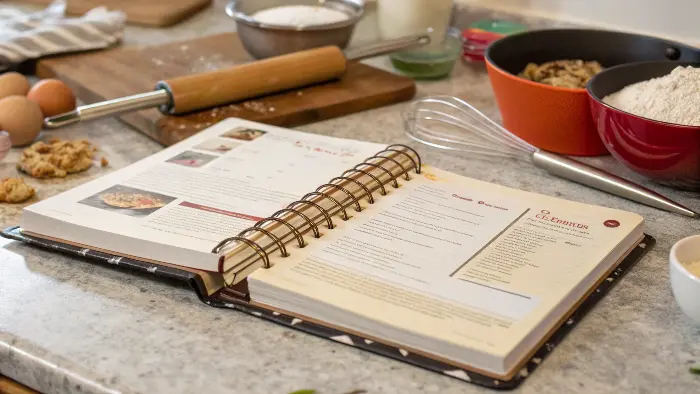
Choosing the right binding for a cookbook isn’t just a minor detail; it’s fundamental to how usable and long-lasting the book will be. I’ve seen so many cookbooks, and the ones that really stand out are those that are clearly designed for the kitchen environment. At Panoffices, while we specialize in stationery, the principles of durability and user experience are universal. A cookbook is a tool, and like any good tool, it needs to be built for the job. You want something that can handle being propped open, splattered on occasionally, and referred to again and again. So, let’s get into what makes a cookbook binding truly kitchen-ready.
What Is the Best Binding for a Cookbook, Really?
You’re in the middle of whisking, your hands are covered in batter, and your cookbook decides to close itself – again! It’s beyond annoying, right? You need that recipe to stay put, open to the right page, without needing a rolling pin to hold it down. This is a huge pain point for home cooks.
The best binding for a cookbook is often Wire-O or a lay-flat hardcover (Smyth-sewn if possible). Wire-O allows the cookbook to lie completely flat or even fold back on itself, making it incredibly practical for kitchen use. A well-constructed hardcover can also be designed to lay flatter and offers superior protection and a premium feel.
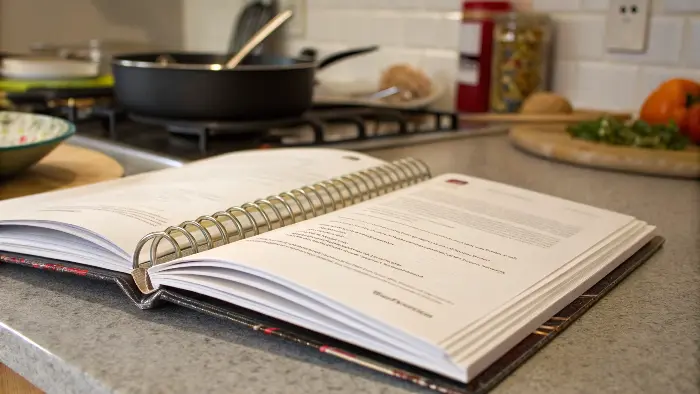
When it comes to cookbooks, "best" usually means "most practical for a busy kitchen." I think we’ve all wrestled with a cookbook that refuses to cooperate. It’s not just about looking pretty on the shelf; it’s about function when you’re actually cooking. The ability for a cookbook to lay flat is a game-changer. No more losing your page or getting ingredients all over it trying to keep it open! And durability is key too, because let’s face it, kitchens can be messy places. So, let’s explore why these options are winners and what else you might consider.
Diving Deeper into Cookbook-Friendly Bindings
For a cookbook, the binding needs to be a workhorse. Here’s a look at the top contenders and why they work:
| Binding Type | Lay-Flat? | Durability | Kitchen-Friendliness Notes | Typical Use Case for Cookbooks |
|---|---|---|---|---|
| Wire-O / Spiral | Yes, 360° | Good | Excellent for hands-free use. Pages turn easily. Metal Wire-O is more durable than plastic spiral. | Very popular for practical, everyday cookbooks. |
| Hardcover (Case) | Can be | Excellent | Offers best protection. Smyth-sewn versions lay flatter. Covers can be wipeable. | Premium, gift cookbooks, comprehensive culinary guides. |
| Perfect Binding | No | Fair | Less ideal for lay-flat. Spine can crack with force. More budget-friendly. | Mass-market paperbacks, shorter or less frequently used cookbooks. |
| Saddle Stitch | Yes | Fair | Only for very thin cookbooks/booklets (e.g., recipe pamphlets). Not for substantial books. | Small promotional recipe collections, magazine-style inserts. |
Wire-O (or its cousin, spiral binding) is fantastic because it just gets out of your way. You open it to the page you need, and it stays there. Period. I’ve got a few Wire-O cookbooks myself, and they are by far the easiest to use when I’m actually cooking.
Hardcover bindings, especially if they are Smyth-sewn (where the pages are stitched in sections), can also be designed to lay relatively flat with a bit of "training" (gently pressing the spine open). The big advantage here is durability and the premium feel. Plus, hardcover surfaces can often be laminated or coated, making them easier to wipe clean – a definite plus in the kitchen! I remember a client who wanted a really high-end corporate gift cookbook; we went with a Smyth-sewn hardcover with a wipeable matte lamination, and it was a huge hit. It felt substantial and looked beautiful, but was still practical.
While perfect binding is common for many books due to cost, it’s not ideal for cookbooks that need to lay flat. You often end up "breaking" the spine to keep it open, which isn’t great for longevity.
What Is the Most Durable Book Binding Method Out There?
You’ve invested in a beautiful, comprehensive cookbook, maybe one passed down or a special gift. The last thing you want is for it to start shedding pages or for the cover to come loose after just a year or two of loving use. It’s heartbreaking when a cherished book doesn’t hold up.
The most durable book binding method is generally considered to be Smyth-sewn case binding (hardcover). In this method, pages are first sewn together in sections (signatures), and then these sections are sewn together to form a sturdy text block, which is then securely attached to a rigid cover. This creates an incredibly strong and long-lasting book.
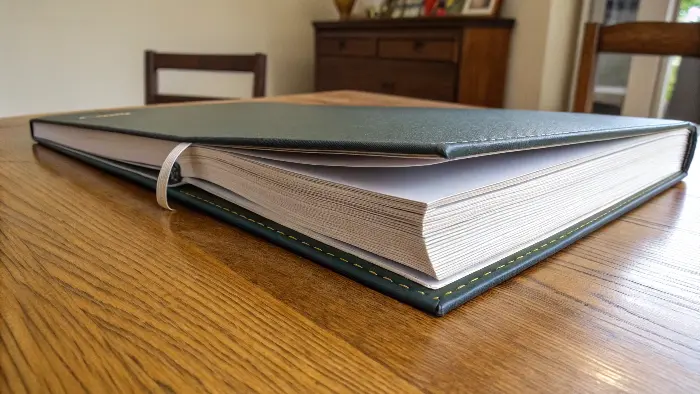
When we talk about durability, especially for a book that might see decades of use like a family cookbook, you really can’t beat a properly constructed sewn binding. I’ve seen antique books, hundreds of years old, still perfectly intact because they were Smyth-sewn. It’s a method that’s stood the test of time for a reason. While it’s more expensive, for a book you want to last a lifetime (or more!), it’s often worth the investment. Let’s look at why this method is so tough.
Diving Deeper into Ultimate Durability: Smyth-Sewn
Smyth-sewing is the champion of durability in the bookbinding world. Here’s why it’s so robust, especially when combined with a hardcover (case binding):
-
Stitched Signatures: Instead of relying solely on glue, the pages are physically stitched together into small groups called signatures (usually 16 or 32 pages). Think of it like little booklets being sewn together. This means individual pages are highly unlikely to ever come loose from their signature. I always check the top of the spine on a hardcover book; if you can see those little thread loops at the top of each section of pages, that’s a good sign it’s Smyth-sewn!
-
Strong Text Block: These sewn signatures are then all sewn together to form the main "text block." This creates a flexible but incredibly strong spine. The book can be opened and closed thousands of times without the spine cracking or pages detaching.
-
Secure Cover Attachment: In case binding, this robust text block is then securely glued and often reinforced with cloth (like mull or crash) onto rigid binder’s boards, forming the hardcover. This integration of the text block with a sturdy cover provides excellent protection and structural integrity.
Compared to perfect binding, where pages are essentially glued to the spine, Smyth-sewn is in a different league for longevity. Perfect bound books, especially if not done with high-quality flexible glue or if forced open too flat too often, can eventually have pages come loose. For a heavy-use cookbook, that’s a real risk.
There’s also edge-lined binding, often seen in very high-end leather Bibles, which is exceptionally durable and flexible, but that’s typically overkill and too costly for most cookbook applications. For cookbooks aiming for maximum durability, a Smyth-sewn hardcover is the practical king. It’s an investment in a book that can truly become an heirloom.
What’s the Cheapest Way to Bind a Cookbook, If Budget Is Tight?
Okay, so you’re putting together a community cookbook, a small collection of family recipes, or maybe you’re self-publishing on a shoestring budget. You want it to look decent, but cost is a major factor. What are your options without breaking the bank?
The cheapest ways to bind a cookbook are typically saddle-stitching (for very thin cookbooks, like pamphlets) or perfect binding (for softcover books with more pages). Plastic comb binding or spiral binding can also be cost-effective, especially for smaller print runs, and offer the benefit of laying flat.
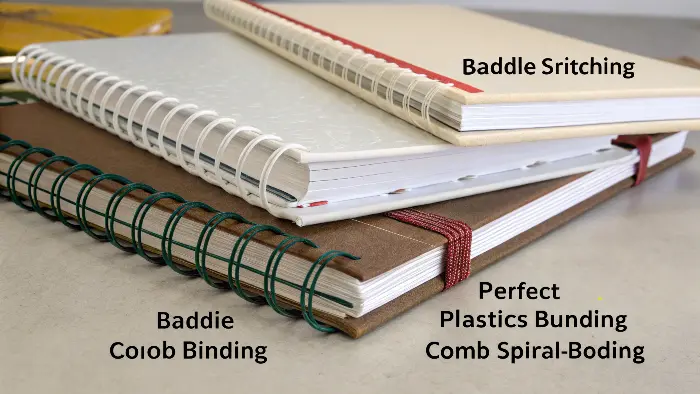
Budget is a real thing, I get it! Not every cookbook project has the funds for premium hardcover Smyth-sewn binding. When I first started Panoffices, we had to be super mindful of costs for our early promotional materials. The good news is there are more affordable ways to get your recipes bound and out into the world. It’s about finding the best balance of cost, appearance, and at least some level of usability for a cookbook. Let’s look at these budget-friendly methods.
Diving Deeper into Budget-Friendly Binding
When cost is king, you have to make some compromises, but you can still get a functional cookbook.
-
Saddle Stitching:
- How it works: Pages are folded and stapled through the spine. Think of a magazine or a thin booklet.
- Pros: Very inexpensive, lays relatively flat.
- Cons: Only suitable for a low page count (typically under 64-80 pages, depending on paper thickness). A cookbook with many recipes will quickly exceed this. It also doesn’t look as "book-like" or feel as substantial. I’ve seen this used for small, themed recipe collections, like "Holiday Cookies," and it works fine for that.
-
Perfect Binding:
- How it works: Pages are glued together at the spine with a strong, flexible adhesive, and a wraparound cover is attached. This is how most paperback books are made.
- Pros: Relatively inexpensive for books with a higher page count (e.g., 50-250+ pages). Gives a professional-looking square spine that can be printed on.
- Cons: Doesn’t naturally lay flat, which is a drawback for cookbooks. Forcing it flat can weaken the spine over time. However, for a budget-conscious project, it’s often the go-to for a "real book" feel.
-
Plastic Comb Binding / GBC Binding:
- How it works: Rectangular holes are punched along the spine, and a plastic comb with "fingers" is inserted.
- Pros: Lays flat, pages can be added or removed (though not super easily for a bound book). Relatively inexpensive, especially for small quantities or DIY.
- Cons: Doesn’t look as professional as perfect binding or hardcover. The plastic combs can become brittle or break over time. Pages can sometimes tear at the holes.
-
Spiral Binding (Plastic Coil):
- How it works: Similar to Wire-O, but uses a continuous plastic coil threaded through round holes.
- Pros: Lays flat and can fold back on itself. More durable than plastic comb. Relatively inexpensive.
- Cons: The plastic coil might not feel as premium as metal Wire-O. The spine isn’t printable.
For a cookbook with a decent number of recipes where budget is the primary concern, perfect binding is often chosen for its book-like appearance and ability to handle more pages than saddle stitch. If laying flat is non-negotiable even on a tight budget, then plastic spiral binding is a strong contender, offering better kitchen usability than perfect binding, though perhaps with a slightly less "published book" aesthetic. It’s all about trade-offs!
What Two Binding Methods Are Best for a Thick, Heavy Textbook (And Big Cookbooks Too)?
Ever lugged around a massive textbook? Or maybe you own one of those encyclopedic cookbooks that could double as a doorstop? For these hefty volumes, the binding has a serious job to do. It needs to support a lot of weight and withstand frequent use without falling apart.
For a thick, heavy textbook (and similarly substantial cookbooks), the two best binding methods are Smyth-sewn hardcover (case binding) for maximum durability and longevity, and a high-quality, robust perfect binding if budget is a greater concern but strength is still needed. Both can handle the stress of many pages and significant weight.
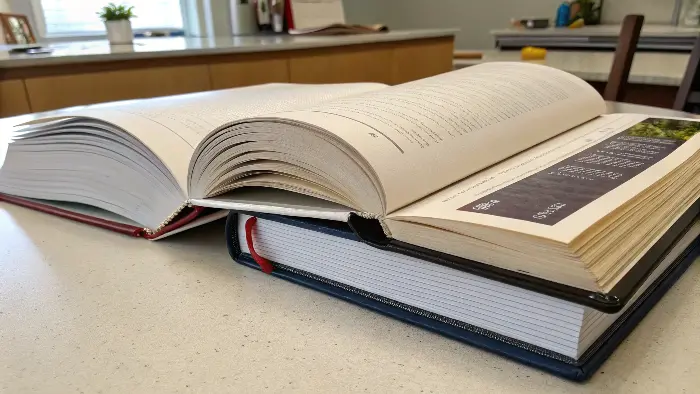
When a book is thick and heavy, the strain on the spine is immense. I remember my college textbooks – some held up, others… not so much. The ones that survived were almost always hardcover and, if I’d known then what I know now, probably Smyth-sewn. The same logic applies to those giant, all-encompassing cookbooks. You need a binding that’s engineered for the load. Let’s explore why these two methods are up to the task.
Diving Deeper into Bindings for Heavyweights
Handling the bulk and weight of a large book requires specific binding strengths:
-
Smyth-Sewn Hardcover (Case Binding):
- Why it works for heavy books: As we’ve discussed, the stitched signatures create an incredibly strong text block. When this is combined with a rigid hardcover, the entire structure is very stable. The cover protects the pages, and the sewn spine distributes the stress of the book’s weight evenly when it’s opened or handled. This prevents the text block from pulling away from the cover or the spine from collapsing. For a comprehensive cookbook like "The Joy of Cooking" or a culinary school textbook, this is the ideal. It’s built to last through years, even generations, of use. I’ve seen some truly massive art books bound this way, and they hold up beautifully.
-
Robust Perfect Binding (with a strong spine):
- Why it can work for heavy books (with caveats): While not as inherently durable as Smyth-sewn, modern perfect binding, especially when done well with strong, flexible PUR (Polyurethane Reactive) glue and a well-prepared spine, can handle thicker books. The key is the quality of the glue and the process.
- Considerations:
- Notch Binding: Sometimes, instead of just roughing the spine, small notches are cut into it to allow deeper glue penetration, increasing strength.
- Spine Lining: Adding a lining material to the spine before the cover is attached can also add strength.
- Lay-Flat Issues: The primary drawback remains that perfect bound books don’t naturally lay flat. For a very thick textbook or cookbook, trying to force it flat can put a lot of stress on even a strong glued spine.
- When it’s used: This is often chosen for thick softcover textbooks or trade paperbacks where the cost of hardcover Smyth-sewn binding would make the book prohibitively expensive. It’s a compromise between durability and affordability for high-page-count books.
For those truly monumental cookbooks or textbooks, if longevity and the ability to withstand heavy use are paramount, Smyth-sewn hardcover is unmatched. If budget dictates a softcover, then ensuring the perfect binding is of a very high quality (ask the printer about PUR glue and their methods for thick books) is crucial. You don’t want that magnum opus of recipes to end up as a pile of loose pages!
Conclusion
Choosing the right binding for your cookbook is key to its success in the kitchen. For heavy use, Wire-O offers unbeatable lay-flat convenience, while a sturdy hardcover, especially Smyth-sewn, provides lasting durability. Even on a budget, options like perfect binding or spiral can deliver your recipes effectively. It’s about matching the binding to your cookbook’s destiny!

